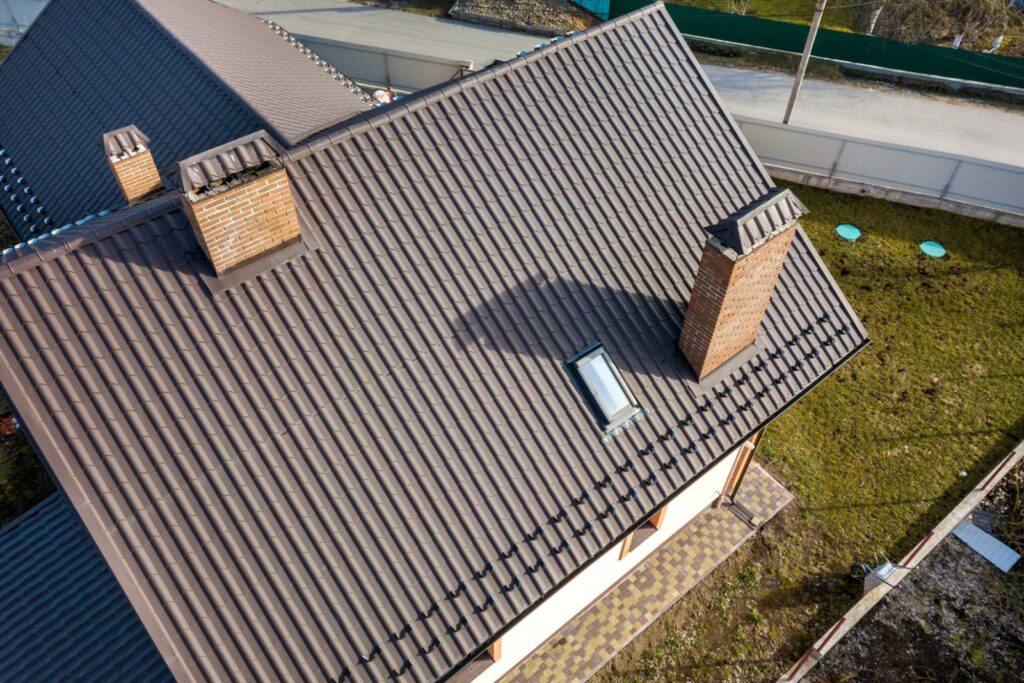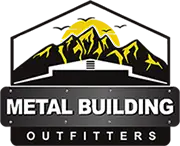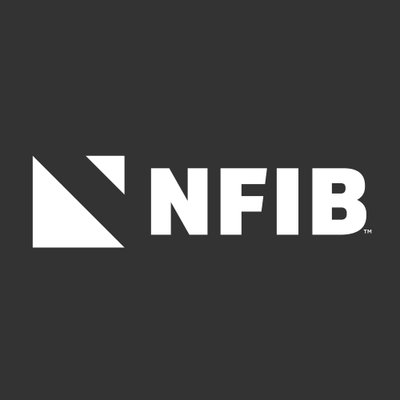
Contents
By incorporating these ten essential low-maintenance tips, you can guarantee your steel structure remains in top condition with minimal effort. From exterior coating maintenance to landscaping around the building, each step plays a vital role in preserving the integrity and appearance of your steel construction. Stay tuned to discover how these simple yet effective tips can save you time and money in the long run.
Key Takeaways
- Regularly inspect steel buildings for wear and damage.
- Use high-quality paints and coatings for longevity.
- Ensure proper sealing for energy efficiency.
- Implement preventive maintenance measures promptly.
- Seek expert advice for complex maintenance issues.
Exterior Coating Maintenance
To maintain the exterior coating of your customizable steel building, regularly inspect for any signs of wear or damage. Important maintenance not only enhances the aesthetics of your building but also prolongs its durability. When it comes to exterior painting tips, make sure that the surface is clean and dry before applying a new coat of paint. Remove any loose paint or rust using a wire brush or sandpaper, and consider using a primer before painting to guarantee better adhesion and longevity of the paint.
Rust prevention techniques are essential for maintaining the structural integrity of your steel building. One effective method is to apply a rust-inhibiting primer before painting. This creates a protective barrier between the metal surface and the elements, reducing the risk of rust formation. Additionally, regularly inspect your building for any signs of rust, especially in areas prone to moisture accumulation or exposure to harsh weather conditions.
When painting your steel building, choose high-quality paints specifically designed for metal surfaces. These paints are formulated to withstand the unique challenges posed by steel, such as expansion and contraction due to temperature variations. By following these exterior painting tips and rust prevention techniques, you can ensure that your customizable steel building remains not only visually appealing but also structurally sound for years to come.
Roof Inspection and Repair
Examining and repairing the roof of your customizable steel building is important to ensure its longevity and structural integrity. Regular roof inspections help identify potential issues early, preventing costly damages in the future. One key aspect of roof maintenance is applying a protective roof coating. Roof coatings act as a barrier against harsh weather elements, preventing corrosion and extending the roof’s lifespan greatly. Additionally, these coatings provide an extra layer of insulation, improving energy efficiency within your steel building.
To make sure your roof remains leak-free and in excellent condition, it’s essential to conduct routine inspections and address any signs of wear promptly. Below is a table outlining essential steps for roof inspection and repair to aid you in maintaining your steel building effectively:
| Roof Inspection and Repair Steps | Description |
|---|---|
| Regular Inspections | Schedule routine checks for damage. |
| Addressing Leaks | Promptly repair any signs of leaks. |
| Applying Roof Coating | Protect your roof with a durable coating. |
| Checking Sealants | Ensure sealants are intact and effective. |
| Professional Inspection | Seek expert advice for thorough checks. |
Following these steps will help you prevent leaks, maintain the integrity of your roof, and ultimately prolong the life of your customizable steel building.
Regular Cleaning of Gutters
To preserve the integrity of your steel building, it’s essential to regularly clean your gutters.
We recommend cleaning them at least twice a year to prevent blockages and potential water damage.
Make sure to have tools like a sturdy ladder, gloves, and a trowel for efficient gutter cleaning.
Gutter Maintenance Importance
Regular cleaning of gutters is crucial for maintaining the structural integrity and longevity of your customizable steel building. Rainwater collection within gutters can lead to blockages caused by debris, such as leaves, dirt, and branches. These blockages prevent proper water flow, increasing the risk of water damage to the building’s exterior and foundation.
To mitigate this risk, installing gutter guards can help prevent debris buildup, allowing rainwater to flow freely away from the building. Gutter guards act as a barrier, preventing leaves and larger debris from entering the gutter system while still allowing water to pass through.
Cleaning Frequency Recommendation
To maintain the structural integrity of your customizable steel building and prevent water damage, it’s imperative to establish a consistent schedule for cleaning your gutters. Neglecting gutter maintenance can lead to water overflow, causing potential harm to the building’s foundation. Here are key points to contemplate:
Cleaning Product Recommendations: Utilize mild detergent and water to clean the gutters effectively.
Frequency Variations: Adjust the cleaning frequency based on the surrounding environment and the presence of nearby trees to prevent clogging.
Weatherproofing Strategies: Ponder installing gutter guards to minimize debris buildup and reduce the frequency of cleanings.
Tools for Efficient Cleaning
Effective gutter cleaning requires specialized tools designed to efficiently remove debris and ensure ideal water flow in your customizable steel building. To maintain a sustainable practice, investing in high-quality equipment is essential. Here are some efficient cleaning tools to aid in your gutter maintenance:
| Tool | Description |
|---|---|
| Gutter Scoop | Designed to scoop out debris from gutters. |
| Extension Wand | Helps reach high gutters without a ladder. |
| Gutter Cleaning Kit | Includes various attachments for thorough cleaning. |
| Pressure Washer | Ideal for blasting away tough debris and buildup. |
These tools make the cleaning process easier and contribute to the longevity of your steel building.
Pest Control Measures
To prevent rodent infestations in your steel building, seal all entry points and keep food sources tightly sealed.
Managing termite populations involves regular inspections and treating any infestations promptly.
Utilize deterrents for insects such as window screens, weather stripping on doors, and regular maintenance of landscaping to minimize pest attraction.
Preventing Rodent Infestations
Implementing proper sealing measures around entry points is essential to prevent rodent infestations in customizable steel buildings. To effectively keep rodents at bay, consider the following rodent prevention strategies and pest control methods:
Seal all Gaps: Use steel wool or caulk to seal any small openings or gaps in walls, floors, or ceilings where rodents could enter.
Keep Surroundings Clean: Remove clutter, debris, and food sources near the building to discourage rodents from seeking shelter.
Use Traps and Baits: Set up traps and bait stations strategically around the building to capture and eliminate any rodents that manage to enter.
Managing Termite Populations
When managing termite populations in customizable steel buildings, it’s vital to conduct regular inspections for early detection and prompt intervention. Implement termite prevention strategies like maintaining proper drainage, sealing cracks, and keeping woodpiles away from the building.
Guarantee that all wooden structures are treated with appropriate termite-resistant chemicals. If a termite infestation is detected, consider termite treatment options such as baiting systems, liquid termiticides, or fumigation. Regularly monitor treated areas to prevent re-infestation.
Remember that termites can cause significant damage if left unchecked, so proactive management is essential. By following these steps, you can effectively control and minimize the impact of termite populations in your steel building.
Deterrents for Insects
Regularly inspecting your steel building for potential entry points and implementing effective pest control measures are essential in deterring insects and maintaining a pest-free environment. To keep insects at bay, consider the following tips:
Seal Cracks and Crevices: Use silicone sealant or weatherstripping to close off any openings that insects could use to enter your building.
Install Screens: Fit windows and vents with screens to prevent insects from flying or crawling in.
Utilize Natural Solutions: Plant insect-repelling herbs like lavender or mint around the perimeter of your building to deter pests naturally.
Monitoring Foundation for Cracks
To safeguard the structural integrity of your steel building, regularly inspect the foundation for any signs of cracks. Monitoring the foundation’s stability is essential to secure the longevity of your steel building. By being proactive in crack prevention, you can avoid costly repairs and maintain a safe environment within your building.
Foundation Crack Monitoring Table:
| Location | Size | Severity |
|---|---|---|
| Exterior Walls | Hairline | Low |
| Interior Corners | 1/8 inch | Medium |
| Floor Cracks | 1/4 inch | High |
| Foundation Slab | 1/2 inch | Critical |
| Column Bases | Multiple cracks | Critical |
Regularly inspecting these areas will help you catch any issues early on and prevent further damage. Hairline cracks on exterior walls are common and usually not a cause for concern. However, larger cracks in the floor or foundation slab can indicate a more serious problem that needs immediate attention. Multiple cracks in column bases are critical as they can compromise the structural stability of the entire building.
HVAC System Maintenance
Examining and maintaining your HVAC system is essential for guaranteeing peak performance and efficiency in your steel building. Neglecting HVAC maintenance can lead to decreased indoor air quality and higher energy costs.
To keep your HVAC system in top shape, follow these essential maintenance tips:
HVAC Filter Replacement: Regularly changing your HVAC filters is crucial for maintaining good indoor air quality and efficient system operation. Clogged filters restrict airflow, making your system work harder and consuming more energy. Aim to replace filters every 1-3 months, depending on usage and filter type.
Ductwork Cleaning: Over time, dust, debris, and mold can accumulate in your HVAC ductwork, reducing system efficiency and indoor air quality. Schedule professional duct cleaning every 3-5 years to remove buildup and ensure efficient airflow throughout your steel building.
Professional Maintenance: Consider scheduling annual HVAC maintenance with a licensed technician. Professional inspections can catch minor issues before they escalate, ensuring your system operates efficiently and prolonging its lifespan. During these maintenance visits, technicians can also perform tasks like checking refrigerant levels, inspecting electrical components, and lubricating moving parts to keep your HVAC system running smoothly.
Upkeep of Insulation
When maintaining the insulation in your steel building, it’s important to contemplate the various material options available. Regularly inspecting the insulation for any signs of damage is vital to guarantee its efficiency.
Should you detect any leaks or issues, promptly repairing them will help uphold the insulation’s effectiveness.
Insulation Material Options
Explore different insulation material options to ensure the longevity and efficiency of your customizable steel building.
When selecting insulation, consider soundproofing options for a quieter interior and focus on energy efficiency to reduce heating and cooling costs.
Opt for eco-friendly materials to minimize environmental impact and choose options with moisture resistance to prevent mold and mildew growth.
For soundproofing, materials like fiberglass and foam board can be effective, while cellulose insulation provides good energy efficiency.
Eco-friendly choices such as recycled denim or sheep’s wool aren’t only sustainable and offer excellent moisture resistance, making them ideal for maintaining a comfortable and durable environment within your steel building.
Inspecting for Damage
To effectively maintain the insulation in your customizable steel building, regularly inspect for any signs of damage or wear that may compromise its effectiveness. Start by conducting a thorough damage assessment of the insulation material. Look for tears, punctures, or areas where the insulation may have shifted or compressed, reducing its thermal efficiency.
Additionally, pay close attention to any signs of moisture or water damage, as these can lead to mold growth and further insulation deterioration. Rust prevention is essential, especially in steel buildings, as rust can weaken the structure and affect the insulation’s performance.
Repairing Any Leaks
Inspecting and promptly repairing any leaks in the insulation of your customizable steel building is essential for maintaining its energy efficiency and structural integrity. To effectively handle this task, consider the following:
Leak Prevention Strategies:
- Regularly inspect the insulation for any signs of wear or damage.
- Utilize sealants or caulking to seal any gaps or openings where leaks may occur.
- Implement proper drainage systems to divert water away from the building.
Repair Techniques:
- Address leaks promptly to prevent further damage.
- Replace damaged insulation with new materials as needed.
- Guarantee a thorough and proper seal during the repair process.
Window and Door Maintenance
Regular maintenance of windows and doors is essential to ensure the longevity and functionality of your steel building. When it comes to energy efficiency, making certain that your windows and doors are properly sealed is vital. Check for any gaps or cracks that could be letting air escape or enter the building, as this can impact the building’s overall energy efficiency. Replace weather stripping if it shows signs of wear and tear to maintain a tight seal.
In terms of security features, regularly inspect the locks and hinges on your windows and doors to ensure they’re in good working condition. Lubricate hinges to prevent squeaking and ensure smooth operation. If you notice any issues with the locks, address them promptly to maintain the security of your steel building.
Clean the windows and doors regularly to prevent dirt and grime buildup, which can affect both their appearance and functionality. Use a mild detergent and water to clean frames and glass, and avoid harsh chemicals that could damage the surfaces. Additionally, check for any signs of rust or corrosion on metal frames and address these issues promptly to prevent further damage.
Periodic Structural Inspections
Regular structural inspections are essential for maintaining the integrity and safety of your customizable steel building. Conducting these assessments helps identify any potential issues early on, allowing for timely repairs and safeguarding the longevity of your structure.
Here are some key points to contemplate during your periodic structural inspections:
Structural Integrity Assessment:
- Check for any signs of rust, corrosion, or damage to the steel components.
- Inspect the foundation for cracks, settling, or any other structural abnormalities.
- Evaluate the overall stability of the building, including connections and load-bearing elements.
Corrosion Prevention Techniques:
- Implement a regular cleaning schedule to remove dirt and debris that can accelerate corrosion.
- Apply anti-corrosion coatings or paints to vulnerable areas of the steel structure.
- Ensure proper drainage systems are in place to prevent water accumulation, which can lead to rust.
Professional Inspection:
- Contemplate hiring a certified structural engineer to conduct a thorough inspection at least once a year.
- Obtain a detailed report outlining any issues found and recommended solutions.
- Address any identified problems promptly to preserve the structural integrity of your steel building.
Landscaping Around the Building
To enhance the overall appearance and functionality of your customizable steel building, consider strategizing landscaping options around the structure. When planning the landscaping around your steel building, start by carefully selecting plants that complement the building’s aesthetic while requiring low maintenance. Opt for native plants that thrive in your specific climate conditions, reducing the need for excessive watering and upkeep. Additionally, think about incorporating a well-thought-out garden design that includes a mix of shrubs, flowers, and trees to create a visually appealing and cohesive look.
Outdoor lighting is another important aspect to take into account when landscaping around your steel building. Installing outdoor lights can’t only enhance the building’s appearance at night but also improve safety and security. Choose energy-efficient LED fixtures strategically placed to highlight key features of the landscaping while ensuring proper illumination for pathways and entrances.
Moreover, integrating an irrigation system into your landscaping design can help maintain the health and vibrancy of your plants with minimal effort. Consider installing a drip irrigation system that delivers water directly to the base of plants, reducing water waste and promoting plant growth. This automated system can be programmed to provide the best amount of water at specific times, ensuring your landscaping remains healthy and thriving.
Wrap-Up
Adhering to these ten low-maintenance tips for customizable steel buildings, you can ensure your structure’s longevity and aesthetic appeal.
Just like a well-oiled machine, regular inspections, cleaning, and upkeep will keep your steel building running smoothly and looking sharp.
So, remember to stay on top of maintenance tasks to enjoy a durable and visually appealing steel building for years.
Recent Posts
Efficient Construction of Large Metal Warehouses
When it comes to the optimization of building substantial metal storage facilities, one must consider
Why Choose Energy-Efficient Metal Warehouse Construction?
When it comes to selecting the construction method for your warehouse, choosing energy-saving metal construction
What Is the Key to Efficient Metal Warehouse Construction?
When it comes to efficient metal warehouse construction, understanding the key elements that drive success


